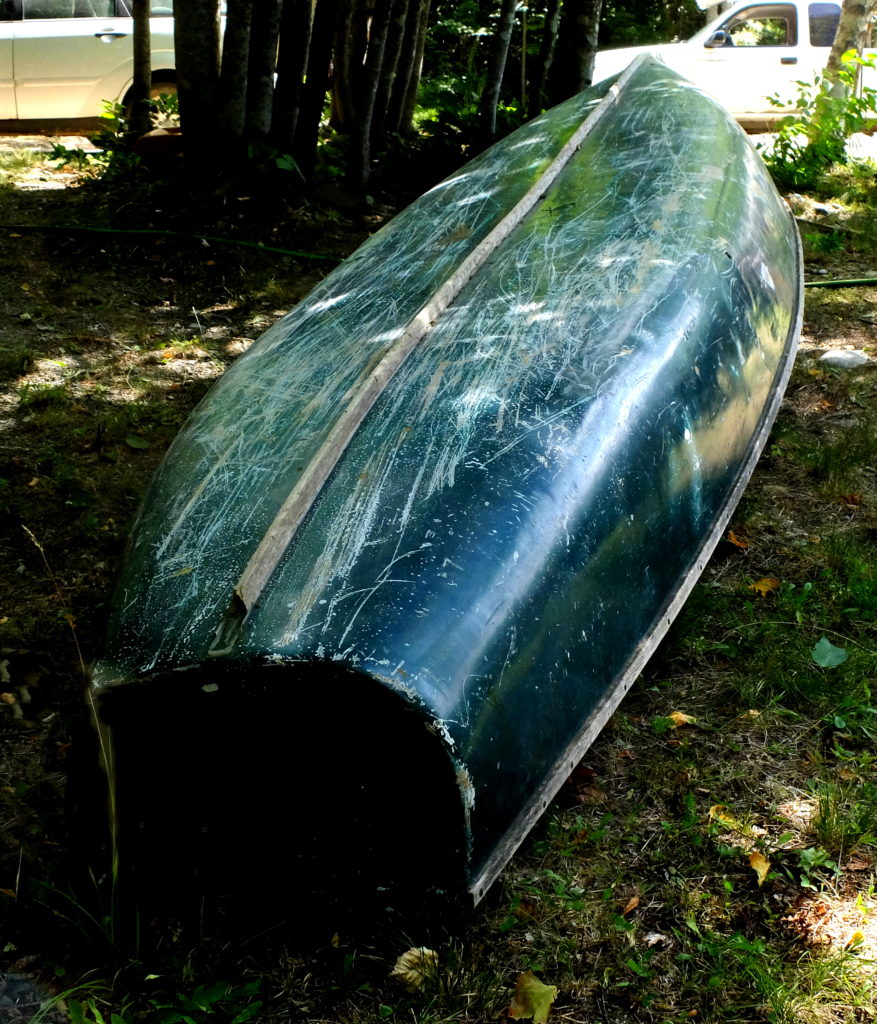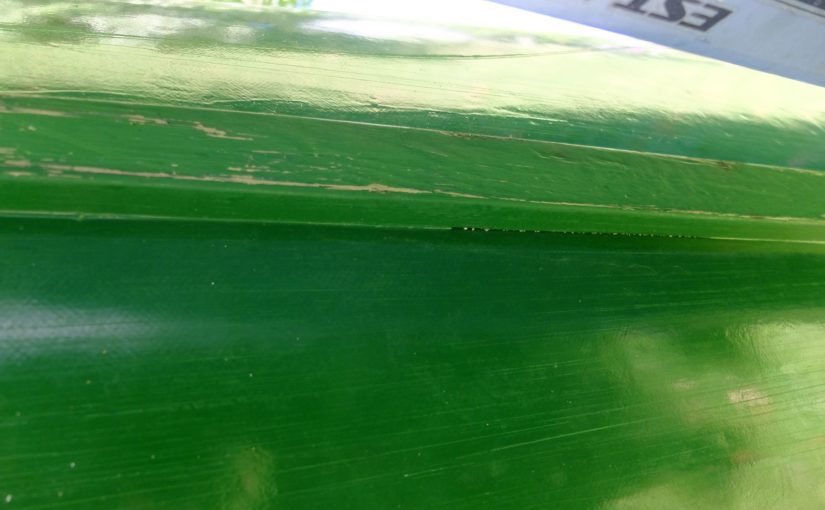I now have four years experience with this boat. We have just come back from a camping trip where we had a lot of stony landings. In total we have probably dragged the boat ashore and launched over a 100 times since it was new, and I thought I needed to check the condition of the bottom to see how much damage had been done. This boat is the one described in the earlier blog entries, the exterior finished with a double layer of fiberglass cloth set in epoxy. I have built several cedar/canvas canoes with the traditional filled canvas covering, and the Grand Laker type canoes are in the same line; however, all the current builders of lakers I have talked to now use fiberglass because of its toughness, and I followed their example. I am well aware of the deviation from the traditional approach. I still run into other boaters who see fiberglass on a cedar canoe and say ‘big mistake’. I therefore want to give a brief report on the condition of my boat after 4 years of use and reiterate the reasons why I think fiberglass is a good choice.
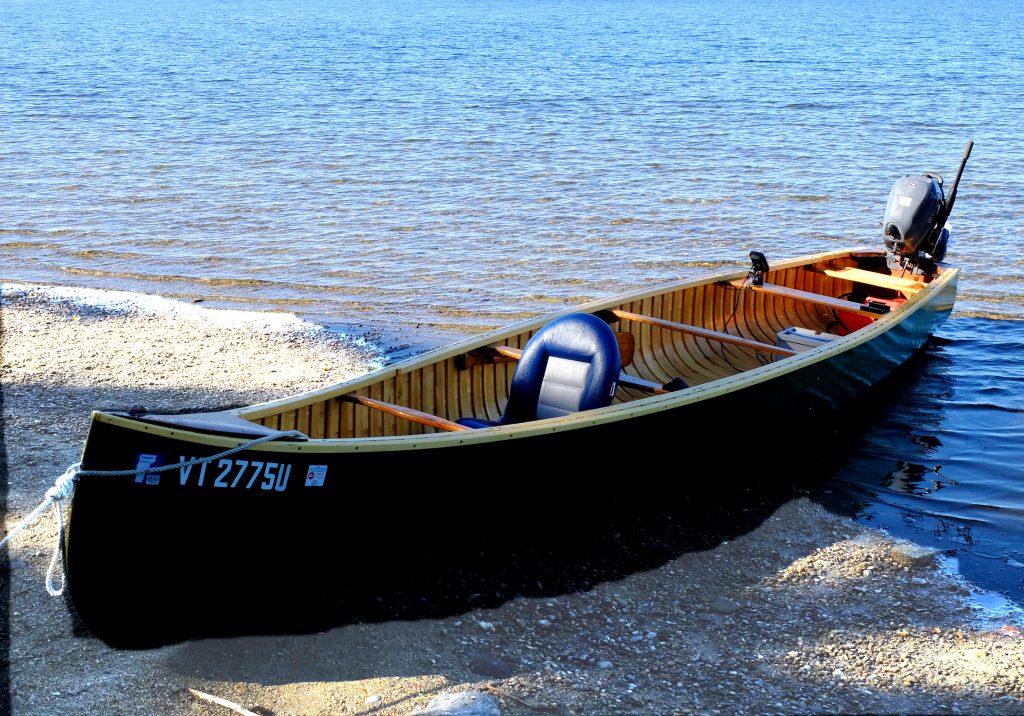
This is the beach at our campsite. It is made up of coarsely rounded gravel averaging about 1/4″ in diameter, and we dragged the boat on and off the beach at least 3 times a day. This was the smoothest landing we had during this trip; others consisted of sharply angular fill, and a couple were unusable altogether. We didn’t hit any rocks in the water, but that could have happened. We are not young people and when it comes to choosing between letting the boat take the knocks, and us struggling with it, the boat has to look after itself. Fully loaded, we are carrying about 750 pounds of boat, motor, gear and people, and some of the landings happen with a loaded boat. I came home working on a plan to repair what I thought would be significant gouges in the fiberglass. I was pretty certain that, had the boat been covered with canvas, I would be dealing with rips and tears.
My repair plan was to sand the bottom of the boat back to bare epoxy, put on a thin new epoxy coat to fill the scratches and seal any fiberglass exposed, and repaint. What I found was that the bottom is still sound. The paint is worn where the boat is grounded out, the only scratches approaching any kind of need for attention came from earlier trips where we had hit rocks on the move while loaded. But nothing needs to be repaired at this time.
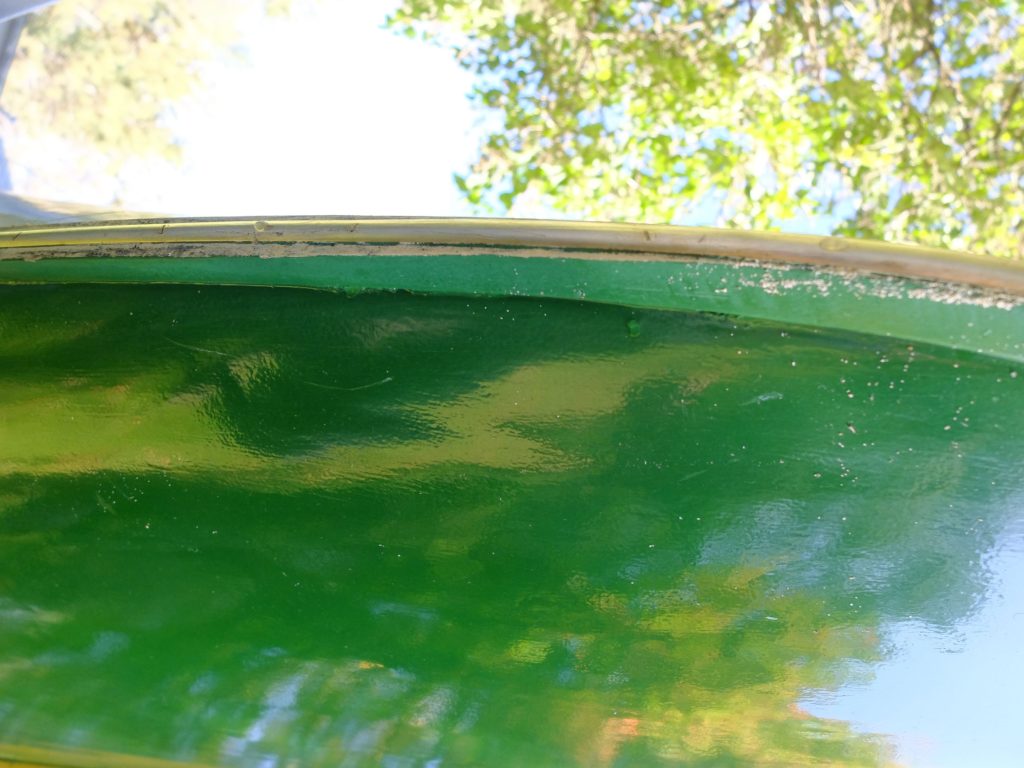
This is the bottom of the stem. The keel projects 3/4″ and is capped with a brass band for about two feet back from where it enters the water and is effectively doing its job of taking the brunt of the landings while protecting the fiberglass skin. The stem itself is made of white ash, and the keel is white oak.
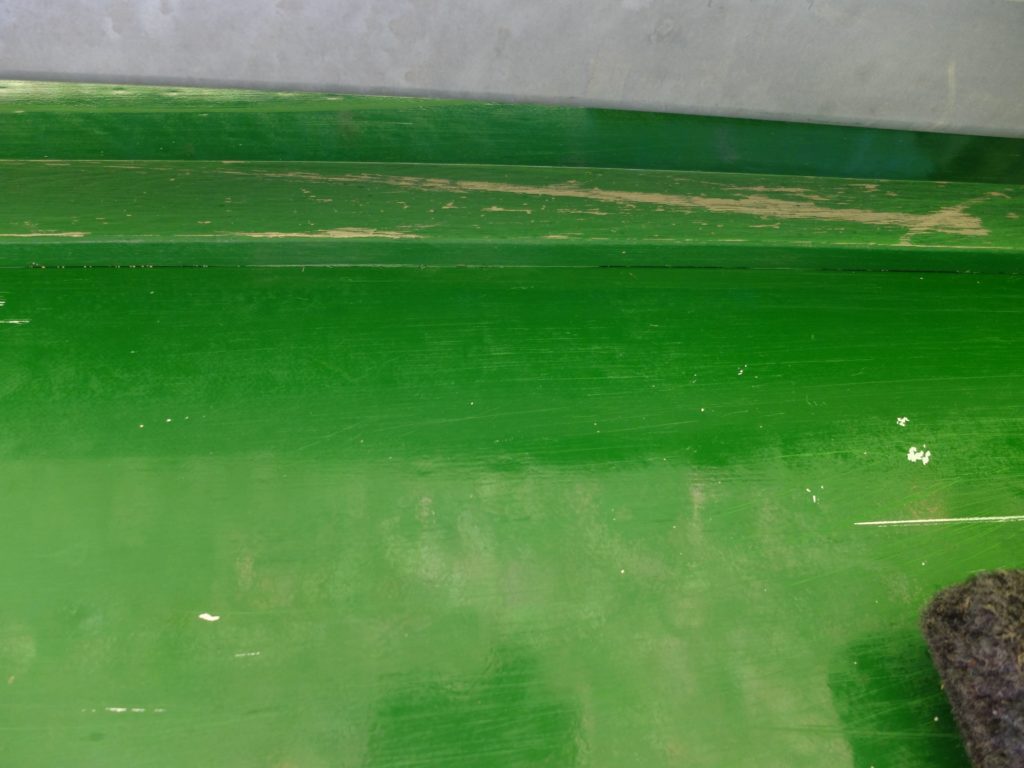
This is a little further aft; the keel widens from 3/4″ where it is scarfed to the stem, to about 3″ amidships, and then tapers back to 2″ at the transom. Again, the keel is taking the hits, some of the bottom paint is scratched but not gouged.
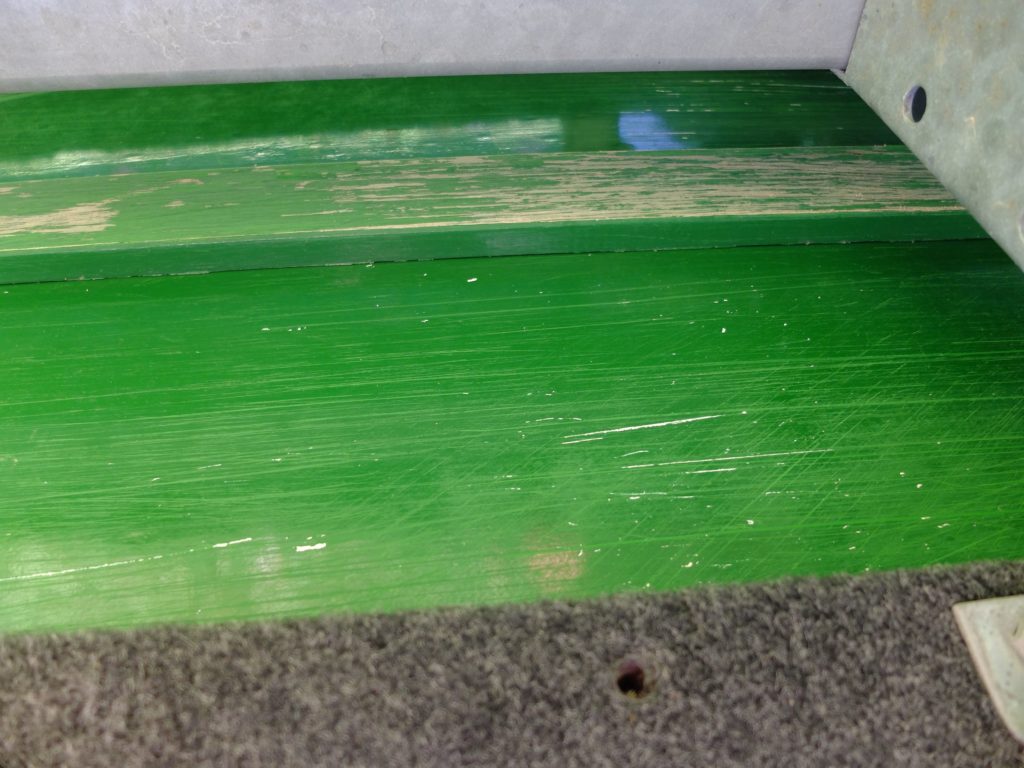
Approaching midship.
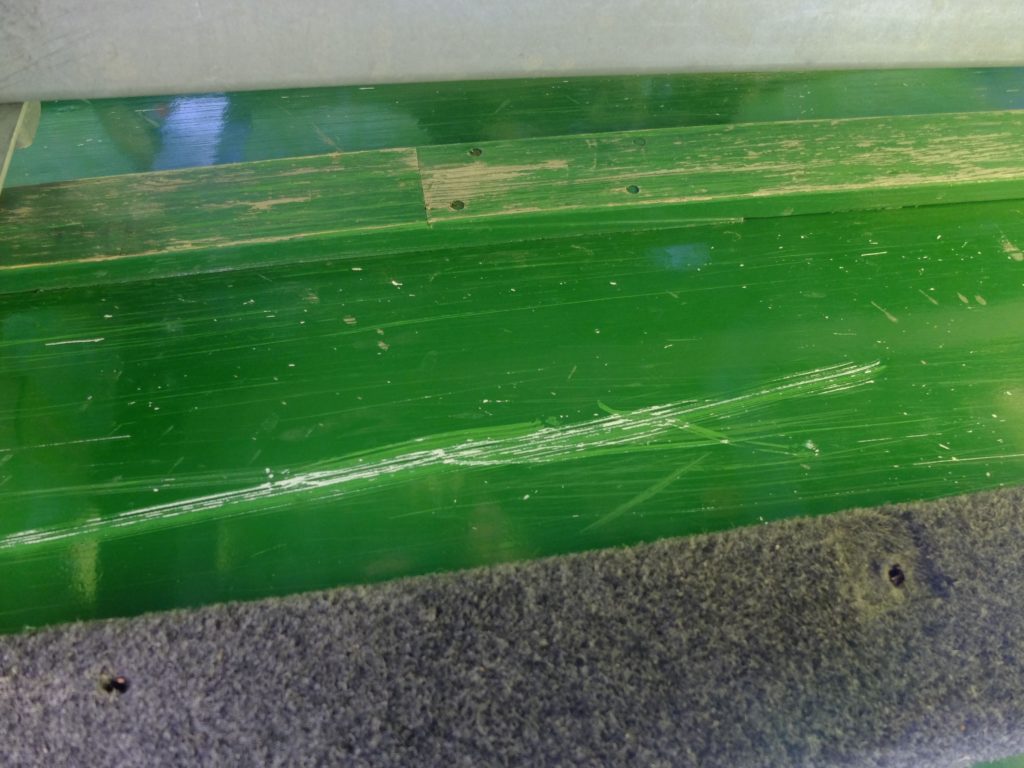
Aft of center, showing the scarf in the keel where most of the weight sits when grounded. Keel a little worn but intact, large scratch from hitting a rock while moving, but nothing to worry about.
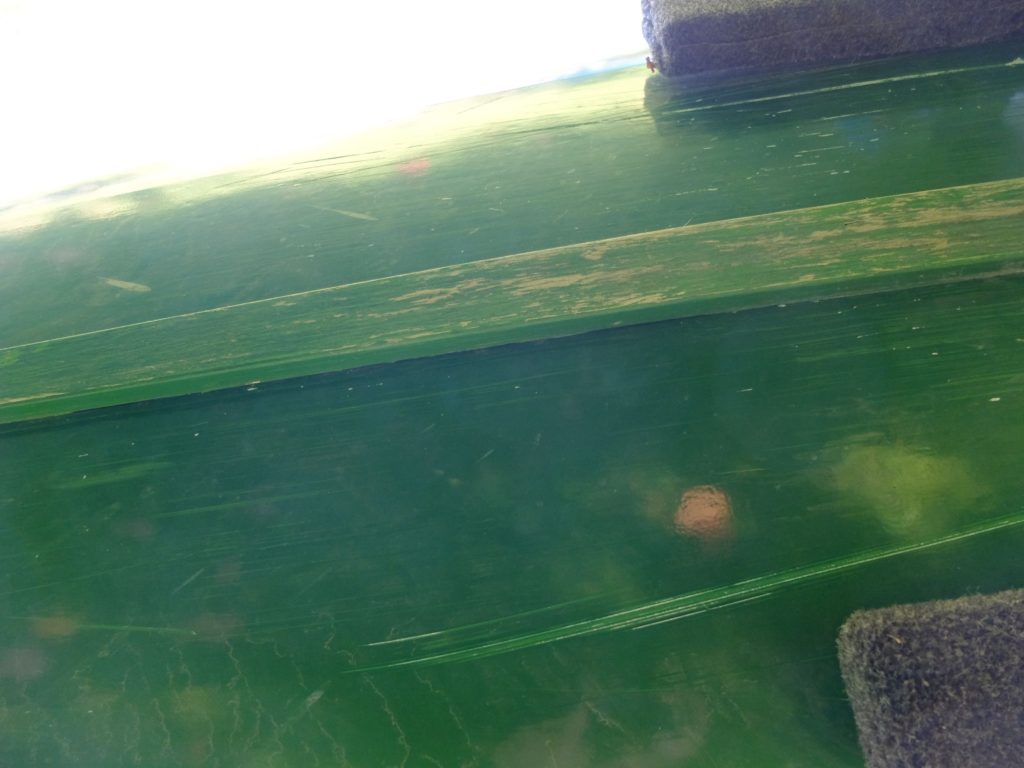
A little further aft.
So – I am happy with the performance of the fiberglass and paint. The advantages as I see them of fiberglass are :
- It adds considerable strength and rigidity to the hull. I have no problem with oil-canning, I think partly thanks to the fiberglass/epoxy. Canvas would not add as much strength.
- The strength helps absorb the stresses of trailering and chaffing on the trailer / tie-downs.
- There is no space between the planking and covering in which sand can accumulate, as it can with a canvas-covered boat where sands works down from the inside if there are any gaps between planks.
- It does not rip like canvas, nor is there any concern about rot.
- It can cover a width of beam that is difficult to find canvas big enough for on these 20′ boats.
- Fiberglass is no heavier and possibly lighter than filled canvas, and does not gain weight as it gets wet.
The disadvantages are all in the realm of could-be in the future :
- The epoxy prevents the planking from expanding on the outside, while the inside theoretically can expand, creating stresses that could possibly separate the epoxy from the planking, or crack the fiberglass along the plank seams. Maybe this would be a problem if you left the boat in the water for extended periods, but that is not how I use my boat. It is in the water for a few days, then back out and stored under cover. This problem can be mitigated by using quarter-sawn planking lumber that is properly dried.
- Replacement of rotted/broken ribs or planks becomes impossible with an epoxy skin, unlike canvas where you can take the whole think apart one tack at a time. True, but I don’t expect to break ribs or planks, and with care taken for how you store the boat, rot is unlikely. Conversely, repair of an epoxy-coated boat with structural damage can be accomplished with techniques used for repair of fiberglass boats, and presents no more difficulty, or rather is no easier, than structural repair of a strip-planked boat.
I have reached the point in my life where the question of who outlives who is no longer in doubt – unless something goes really well or really wrong, the boat will outlive me regardless of how the fiberglass wears. The boat below is fifteen years old and in need of a refinish – this particular design tends to hog pretty badly – but with a sanding, fresh filler epoxy coat, and some paint will be back in service as long as the owner wants it.
